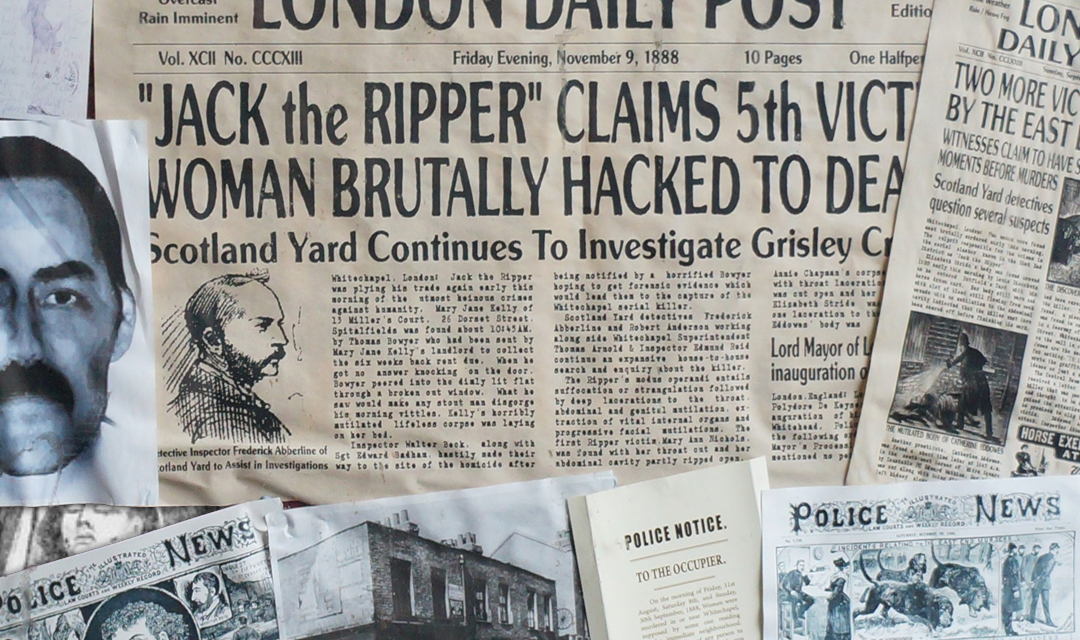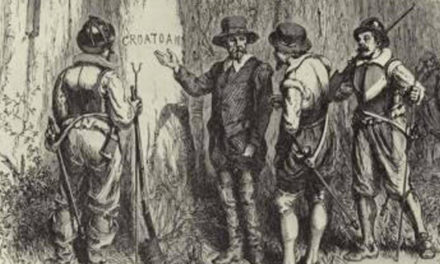Intro
“The word “psychopath” was coined by a German psychiatrist in 1888–the same year Jack the Ripper terrorized London–from the German word psycho-pastiche, literally meaning “suffering soul.”
“The Maidens,” Alex Michaelides
Jack the Ripper didn’t just snuff out life with a knife, he mutilated and disemboweled women, removing organs such as kidneys and utereses, and his crimes seemed to portray an abhorrence for the entire female gender.”
History.com, Nov. 8,2010
Those murders in the 1880’s began, you might say, the Serial Killer craze. The obsession with True Crime.
Jack the Ripper goes by many names: Montague John Druitt, George Chapman, Aaron Kosminski, James Maybrick, Thomas Neill Cream, Thomas Heynes Cutbush, Prince Albert Victor, Duke of Clarence and Avondale, H.H. Holmes, Jacob Isenschmid and Walter Sickert.
Most infamous serial killers get just one moniker.
But Jack’s a slippery devil, and none of these identities seemed to stick.
Even today, Jack the Ripper is still on the loose for dedicated “Ripperologists”. That group is still, eternally fascinated by this spate of violent crimes in 19th century London.. Although a few experts claim they have proven, with advanced forensics and the like, his identity—no one has convinced the other Ripper-buffs of this feat of detection.
Criminologists, amateur and otherwise, still seek to pin a clear name on him.
We may not know his name but we do know where and when Jack’s crimes were committed.
In Whitehall, a slum in London, the five victims of Jack the Ripper were Mary Ann Nichols (found August 31, 1888), Annie Chapman (found September 8, 1888), Elizabeth Stride (found September 30, 1888), Catherine Eddowes (also found September 30, 1888) and Mary Jane Kelly (found November 9, 1888).
The profession they all had in common was not unusual for that time—and place—they were prostitutes. It was savage. All were stabbed and were disemboweled.
Other such horrendous crimes may have been committed previously. But they had not been brought to public attention, by the newly created newspapers of the time as well as by a modernizing police force.
London was a cesspool for the poor in 1888, filled with many indigents including a flood of immigrants and the newly unemployed– cast aside after being used up by the Industrial Revolution. Many poor families included someone who had turned to prostitution to survive.
A collapsing economy created riots and chaos in London. In 1888, there was rampant petty crime created by pickpockets, burglars and muggers. More violent thieves garroted their victims before stealing their purses. In theory, only about 10 percent of London crime was violent. But some of that violence was soon to become very, very public knowledge.
After news of the four ultra-brutal murders became public, the sensational tabloids of the time stirred up a frenzy with unrelenting headlines about the fiend among them. Previously only a victim could bring a crime to the court’s attention, and the dead could not advocate for themselves. The police, created to contain a London out of control with riots and petty crime, acted now for the first time—in their place– for the dead victims.
Seeking justice for the dead seemed the only way to contain the Ripper.
EVERYONE WANTS TO BE JACK
The public may have become more literate but they were also easily led into believing whatever was written. Now they wanted entertainment and stories–even those that might disturb their sleep.
To them this Jack the Ripper was a creature who could move unseen in the night, a cunning menace, a butcher with an oh-so-quiet knife. In the wealthy West End they locked their doors.
Yet there were some who wished to sign his name to taunting letters to the police.
Jack the Ripper as a name originates from a letter written by an unknown person claiming the be the serial killer, published at the time of the murders. He was also called the Whitechapel Murderer and Leather Apron.
But those names didn’t attract as many copycats or as a personal signature on the so-called Ripper letters. Those names didn’t equally engage the public imagination.
It is believed that “Whitechapel Jack” was behind the murders of Mary Ann Nichols, Annie Chapman, Elizabeth Stride, Catherine Eddowes and Mary Jane Kelly; however, some believe that Jack The Ripper could have been responsible for up to eleven separate murders in London between 1888 and 1891.
After interviewing over 2,000 people,
investigating 300, and detaining 80 others, the London police were still dumbfounded as to the real identity/identities behind all these atrocious murders. During the course of their investigations, however, police narrowed down the suspects to several men (though none were formally charged).”
StrawberryTours.com, undated post”
In 1888, in London, writing hoaxing Ripper letters was something of a pastime for many reading of the crimes. Some newspaper reporters, trying to snag a better headline, are quite possibly among those writing as Jack. The spelling and handwriting –varying from smooth to shaky—makes the case for multiple writers.
Early letters “from Jack” were reproduced on large broadsides and in newspapers and fueled the panic.
Only one letter, not signed as Jack the Ripper, is considered by experts to actually be from the murderer. Called today, the “From Hell” letter, it appeared about three weeks after the murder of Catherine Eddowes. It arrived along with a small piece of human kidney. The author of the letter claimed to have eaten the other half “fried.”
One of Eddowes’ kidneys were removed and allegedly taken away by the killer, so that letter claimed a certain authenticity.
Some letters that included Americanisms such as “Dear Boss” led to looking at
American suspects who visited London.
The publication of the letters produced copyists who used the same phrases such as “Yours Truly,” “I love my work,” ”Ha ha,” “Catch me if you can” and the “Jack the Ripper” signature.
Readers of the tabloids were both terrified and enthralled. At least two people, both women, were arrested and charged with writing hoaxing letters.
Over time there have been over 600 letters claiming to have been The Ripper, or letters full of advice on how to catch the killer. Scotland Yard says they received such letters into the mid-1960s.
Letters have led, ultimately, to targeting suspects.
In this century popular detective novelist Patricia Cornwall claims to have found conclusive DNA evidence linking Walter Sickert, noted English painter of that time, to the letters –and the crimes. She also has proven watermarks on one of the letters to also be on paper that Sickert was known to use.
But no letter, up to this time, has conclusively linked its writer with the infamous Jack.
PRINCE OR PAUPER: WHO WAS JACK?
In a case like this, there’s no end to the theories.
Jack the Ripper was even claimed to be a woman. Mary Pearcey, a midwife and covert abortionist, was apparently the only female suspect mentioned at the time. She was hanged for murder in 1890, but not for the Ripper’s crimes. “I am not guilty of this, but the punishment is just,” were her enigmatic last words.
Sir Arthur Conan Doyle, creator of Sherlock Holmes, was one of the several mystery authors who have made suggestions as to who-done-it. He speculated that Ripper might have been a woman as she could have pretended to be a midwife and therefore able to be seen in public, wearing bloody clothes, without raising suspicion.
The few eyewitnesses that came forward appeared to be targeting racial or ethnic groups. They described the murderer as dark-complexioned, black beard, black coat and foreign looking.
This description fit many of the newly migrated Jews living in the East End in 1888.
One Polish Jewish barber was anonymously accused by, allegedly, another Jew who didn’t want to be identified because he didn’t want to be known as speaking against another Jew.
Interestingly, two Jews from the ghetto that was Whitechapel, were taken into custody by the police and put in mental institutions. There were no trials for them. They were sentenced, only by private police opinion, to the miserable dungeons, the wretched holes, the legendary madhouses of the times, for life.
Were they mad or were they foreign?
There are also theories that our Jack was a Mason. Some of the letters appeared to have Masonic references and inside knowledge of the secret group. The pieces of apron discovered at the scenes could certainly recall the lambskin apron used in Masonic rituals.
A journalist at the New York Times theorized that—writing of one victim, Mary Jane Kelly, observed in 1888 “This crime scene is like the strictures of Ezekiel.” He is a primary Biblical figure in this Protestant secret society, the Freemasons. That journalist suggested that everyone consider what Ezekiel would have one do to whores, including taking their guts out and burning them.
A great grandson exposed his long dead relation as Jack with confirmation from a great-great grandson. Consider: why would you try and expose a possibly profoundly mentally disturbed family member, long after their death, when you can not offer them up for arrest and cannot prevent any further crime?
But we live in a shock culture. Will it be fun to have solved the question of Jack the Ripper’s identity by revealing him as a relative? Will there still emerge some item found on one of the victims, that at this late date will reveal its secrets through forensic evidence,possible tying one of the accused to the crime through science?
Still, if an avid Jackofile solves the mystery of Jack’s identity, will it help us understand what makes a Jack murder and butcher his victims? The puzzle still exists, on so many levels.
In London, in 1888, everyone and no-one was Jack. One’s neighbor could be Jack. You could be Jack when you signed his name. You could whisper to the police that the crazy man who doesn’t belong in your neighborhood –is Jack. He has vanished amid theories, accusations, fake letters. Many were accused and harassed in the name of Jack.
We still have many who search. They are writers, academics, amateur detectives, relatives with an attic supposedly full of clues. He cannot be brought to trial.
His victims will not rise from the dead. Is it time to lay Jack to rest?




